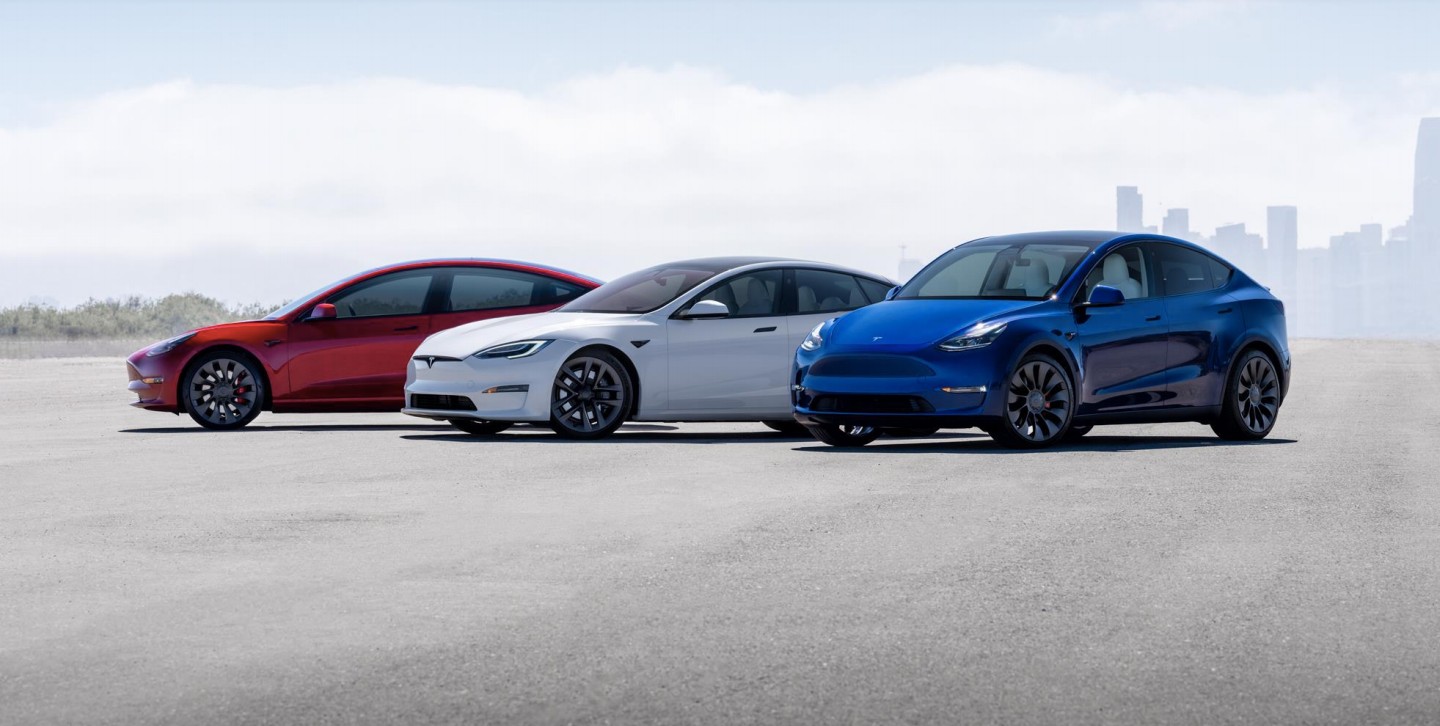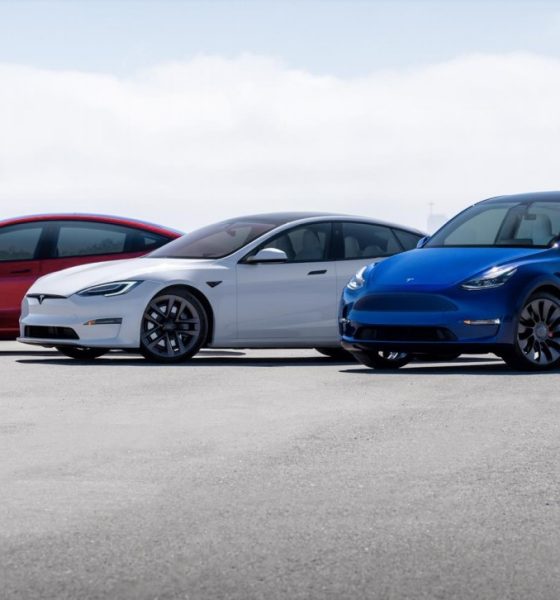The UK’s fuel crisis is encouraging car owners to make the switch from fossil fuel cars to electric vehicles. Even though UK Prime Minister Boris Johnson says the fuel shortage is starting to ease, the interest in EVs has already seeped into the minds of drivers.
Car dealers have been seeing interest in EVs soar as the UK fuel crisis continues. Auto Trader Group Plc told Bloomberg that it received direct inquiries for electric cars every 1.8 minutes over the weekend, about twice the average compared to August. EV interest increased 36% last week already, before the weekend.
Martin Miller, who owns a car dealership in Guildford, Surrey, recently saw a similar spike in EV interest. Miller noted that his company’s EV experts experienced their busiest day ever last Friday, and the interest in electric vehicles doesn’t seem to be dying down. Many people have scheduled test drives in an electric vehicle in the coming week, creating somewhat of a good dilemma for Miller’s company since it is low on stock.
“People buy electric cars for environmental reasons, for cost-saving reasons, and because the technology’s great,” Miller told The Guardian. “But Friday was one of those moments where people said, ‘Do you know what, this is a sign that we need to go electric.’ I’ve now got trade-in cars with no petrol to move them.”
UK Fuel Crisis Background
British officials stated that the ports and refineries have plenty of fuel. It’s the gas stations that don’t have enough to service drivers. There is a lack of truck drivers to deliver fuel to stations, causing the UK fuel crisis. Prime Minister Johnson already put British army troops “on standby” to work as truck drivers to haul the fuel to gas stations.
However, the fuel shortage in the UK may have already shown drivers that the need to transition to electric vehicles is now. Besides the current fuel crisis, a few low emission zones have started popping up in the UK. Councils across Briton have restricted certain vehicles or charged specific cars entering low emission zones. There are low emission zones in London, Glasgow, Bath, and Birmingham, with more cities planning to add similar areas in the future.
The fuel crisis and designated low emission zones are encouraging Britons to start transitioning to electric vehicles.
The Tesla Advantage
While the UK fuel crisis is nothing to celebrate, Tesla is in an excellent position to benefit from the soaring interest in EVs. The Tesla Model 3 became the most popular all-electric vehicle in the UK in June 2021. The Tesla Model Y just started selling in Europe and has proven popular in other EU countries.
Then there is the Tesla Semi. Tesla has not provided any updates about its Class-8 heavy-duty truck as of late. However, the Tesla Semi may help solve the UK’s truck driver shortage when released into the market. The Tesla Semi has a unique feature called Convoy Mode that allows one driver to control a fleet of trucks, which could effectively increase the load a single driver can transport.
The Teslarati team would appreciate hearing from you. If you have any tips, reach out to me at maria@teslarati.com or via Twitter @Writer_01001101.

News
Tesla FSD fleet is nearing 7 billion total miles, including 2.5 billion city miles
As can be seen on Tesla’s official FSD webpage, vehicles equipped with the system have now navigated over 6.99 billion miles.

Tesla’s Full Self-Driving (Supervised) fleet is closing in on almost 7 billion total miles driven, as per data posted by the company on its official FSD webpage.
These figures hint at the massive scale of data fueling Tesla’s rapid FSD improvements, which have been quite notable as of late.
FSD mileage milestones
As can be seen on Tesla’s official FSD webpage, vehicles equipped with the system have now navigated over 6.99 billion miles. Tesla owner and avid FSD tester Whole Mars Catalog also shared a screenshot indicating that from the nearly 7 billion miles traveled by the FSD fleet, more than 2.5 billion miles were driven inside cities.
City miles are particularly valuable for complex urban scenarios like unprotected turns, pedestrian interactions, and traffic lights. This is also the difference-maker for FSD, as only complex solutions, such as Waymo’s self-driving taxis, operate similarly on inner-city streets. And even then, incidents such as the San Francisco blackouts have proven challenging for sensor-rich vehicles like Waymos.
Tesla’s data edge
Tesla has a number of advantages in the autonomous vehicle sector, one of which is the size of its fleet and the number of vehicles training FSD on real-world roads. Tesla’s nearly 7 billion FSD miles then allow the company to roll out updates that make its vehicles behave like they are being driven by experienced drivers, even if they are operating on their own.
So notable are Tesla’s improvements to FSD that NVIDIA Director of Robotics Jim Fan, after experiencing FSD v14, noted that the system is the first AI that passes what he described as a “Physical Turing Test.”
“Despite knowing exactly how robot learning works, I still find it magical watching the steering wheel turn by itself. First it feels surreal, next it becomes routine. Then, like the smartphone, taking it away actively hurts. This is how humanity gets rewired and glued to god-like technologies,” Fan wrote in a post on X.
News
Tesla starts showing how FSD will change lives in Europe
Local officials tested the system on narrow country roads and were impressed by FSD’s smooth, human-like driving, with some calling the service a game-changer for everyday life in areas that are far from urban centers.

Tesla has launched Europe’s first public shuttle service using Full Self-Driving (Supervised) in the rural Eifelkreis Bitburg-Prüm region of Germany, demonstrating how the technology can restore independence and mobility for people who struggle with limited transport options.
Local officials tested the system on narrow country roads and were impressed by FSD’s smooth, human-like driving, with some calling the service a game-changer for everyday life in areas that are far from urban centers.
Officials see real impact on rural residents
Arzfeld Mayor Johannes Kuhl and District Administrator Andreas Kruppert personally tested the Tesla shuttle service. This allowed them to see just how well FSD navigated winding lanes and rural roads confidently. Kruppert said, “Autonomous driving sounds like science fiction to many, but we simply see here that it works totally well in rural regions too.” Kuhl, for his part, also noted that FSD “feels like a very experienced driver.”
The pilot complements the area’s “Citizen Bus” program, which provides on-demand rides for elderly residents who can no longer drive themselves. Tesla Europe shared a video of a demonstration of the service, highlighting how FSD gives people their freedom back, even in places where public transport is not as prevalent.
What the Ministry for Economic Affairs and Transport says
Rhineland-Palatinate’s Minister Daniela Schmitt supported the project, praising the collaboration that made this “first of its kind in Europe” possible. As per the ministry, the rural rollout for the service shows FSD’s potential beyond major cities, and it delivers tangible benefits like grocery runs, doctor visits, and social connections for isolated residents.
“Reliable and flexible mobility is especially vital in rural areas. With the launch of a shuttle service using self-driving vehicles (FSD supervised) by Tesla in the Eifelkreis Bitburg-Prüm, an innovative pilot project is now getting underway that complements local community bus services. It is the first project of its kind in Europe.
“The result is a real gain for rural mobility: greater accessibility, more flexibility and tangible benefits for everyday life. A strong signal for innovation, cooperation and future-oriented mobility beyond urban centers,” the ministry wrote in a LinkedIn post.
News
Tesla China quietly posts Robotaxi-related job listing
Tesla China is currently seeking a Low Voltage Electrical Engineer to work on circuit board design for the company’s autonomous vehicles.

Tesla has posted a new job listing in Shanghai explicitly tied to its Robotaxi program, fueling speculation that the company is preparing to launch its dedicated autonomous ride-hailing service in China.
As noted in the listing, Tesla China is currently seeking a Low Voltage Electrical Engineer to work on circuit board design for the company’s autonomous vehicles.
Robotaxi-specific role
The listing, which was shared on social media platform X by industry watcher @tslaming, suggested that Tesla China is looking to fill the role urgently. The job listing itself specifically mentions that the person hired for the role will be working on the Low Voltage Hardware team, which would design the circuit boards that would serve as the nervous system of the Robotaxi.
Key tasks for the role, as indicated in the job listing, include collaboration with PCB layout, firmware, mechanical, program management, and validation teams, among other responsibilities. The role is based in Shanghai.
China Robotaxi launch
China represents a massive potential market for robotaxis, with its dense urban centers and supportive policies in select cities. Tesla has limited permission to roll out FSD in the country, though despite this, its vehicles have been hailed as among the best in the market when it comes to autonomous features. So far, at least, it appears that China supports Tesla’s FSD and Robotaxi rollout.
This was hinted at in November, when Tesla brought the Cybercab to the 8th China International Import Expo (CIIE) in Shanghai, marking the first time that the autonomous two-seater was brought to the Asia-Pacific region. The vehicle, despite not having a release date in China, received a significant amount of interest among the event’s attendees.










